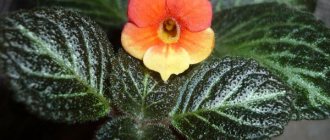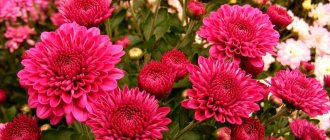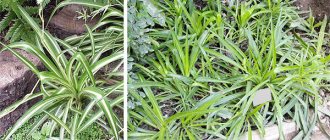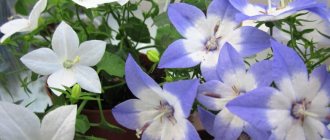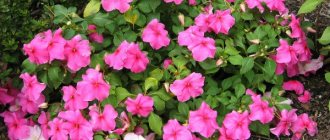Hibiscus is one of the subtropical evergreen plants with spreading branches and delicate rosette-shaped flowers. The second name that has stuck is “Chinese rose”. Many flower growers have known it since the times of the Soviet Union, when beautiful shrubs with delicate scarlet flowers decorated the halls of film clubs, library halls and apartments. However, many facts have been collected around hibiscus, some true and some not so true. We’ll tell you in more detail why it was nicknamed “the flower of death,” how to properly care for this plant when grown indoors, and what benefits hibiscus can bring.
Botanical characteristics of hibiscus
The morphological, physiological and environmental parameters of this plant are represented by the following characteristics:
- Ecological group – perennial (rarely annual, for the herbaceous form) evergreen shrub, a woody form of life is also found;
- Department: Flowering plants;
- Class: Dicotyledons;
- Family: Malvaceae;
- Genus: Hibiscus (Hibiscus);
- Leaves: petiolate, more or less incised with reticulate venation, leaf blade simple;
- Flowers simple or double;
- Fruit: five-leaf capsule with smooth or slightly hairy seeds. Seeds are contained in large quantities.
Problems during cultivation
Caring for hibiscus at home is not difficult, but owners may encounter difficulties. First of all, these are pests that are destroyed with insecticides:
- scale insect;
- mealybug;
- aphid;
- spider mite;
- thrips;
- whitefly - in winter gardens and greenhouses.
Rarely, Chinese hibiscus suffers from bacterial or fungal diseases; fungicides will help cope with the problem. If viruses are detected, the plant is thrown away along with the soil and pot.
The Chinese rose does not bloom or produces rare buds for the following reasons:
- no cuttings;
- warm winter;
- nutritional deficiencies;
- there is not enough light;
- draft;
- improper watering;
- transplantation with root damage;
- Chinese hibiscus with buds was moved to another place;
- pests or diseases;
- any stress received by the plant;
- cramped pot.
Chinese rose suffers due to improper care:
- leaves fall off in the absence of a drainage layer or insufficient soil moisture;
- the plates wrinkle and wither if the air in the room is dry;
- the plant can die at a temperature of 10° C, problems begin when the thermometer drops below 14° C;
- growth stops in a cramped pot;
- a draft causes leaf fall;
- The plant does not tolerate acidic soil.
Why is hibiscus called the “flower of death”?
Many beliefs, signs and legends have long gathered around hibiscus. The beauty and large size of the flowers attracted not only lovers of flowering plants, but also warlocks, sorcerers, and witches. This brought only bad, unproven fame. Constant and long-term observations of people over the annual development cycle of the plant have borne fruit: they have established that hibiscus blooms at approximately the same time - from April to September. However, there have also been abnormal cases of flowering. If suddenly a hibiscus suddenly bloomed at an out-of-hours time, according to the generally accepted opinion, unpleasant coincidences would occur: someone would inevitably die during the period of unexpected flower activity.
Since then, it has become common knowledge that this behavior pattern of the Chinese rose serves as a harbinger of serious illness and death. An even worse sign was considered to be the sudden withering and drying of this plant, as they say, out of the blue for no reason. People began to assume that the flower has internal magic, energy vampirism, and sucks the vitality out of weak people. Therefore, if such a flower stood in a house where a person was seriously ill, the plant was superstitiously taken out or rearranged to avoid direct contact of the patient with the “harbinger of death.”
Of course, the plant is not to blame for anything, and all the troubles are just the result of sad circumstances and long-standing superstitions passed down from generation to generation. When thinking about cultivating hibiscus at home or in the garden, do not despair - it will not cause you harm, and the flowering period when grown far from the homeland of this species is not strictly established. There is no need to look for hidden meaning where there really is none. Most often, flowering and wilting are affected by several simple reasons that literally lie on the surface: improper care, insufficient or excessive watering, short daylight hours, poor substrate and lack of mineral and organic substances, severe pruning and manual formation of the crown.
These are factors that determine the timing of flowering, and with proper care, hibiscus can delight you and your household with flowering almost all year round, and in open ground - throughout the summer season. Another reason for drying and yellowing of leaves and shoots may be that the hibiscus root system is affected by pests. As a result, the function of nutrition and root absorption was disrupted due to damage to the conductive vessels.
Chinese rose care
Chinese rose can be safely grown in the garden and apartment. At home it is an evergreen shrub, and outside it is a large tree up to 3 m tall. Hibiscus feels best in a greenhouse because it does not tolerate frosty winters.
Temperature
The Chinese rose prefers a temperature of 18-25 degrees, so in summer it does well on the balcony and in the garden. In winter, the thermometer in the room should not fall below 15 degrees, because already at 10 it will shed its leaves.
Photo: izhevsk.ru
Lighting
The Chinese rose definitely needs more light, because otherwise it simply will not bloom. But direct rays are also destructive, so shade the tree. In summer, feel free to take the flowerpot out onto the balcony or terrace, but do not leave it in a draft.
Photo: beforeandafterdiy.com
Watering
There is no standard watering schedule because you need to monitor the condition of the soil. Until you get used to distinguishing visually, check the substrate with a wooden stick to a depth of 2-3 cm. Do not use cold water or tap water, because it should at least sit for a couple of days.
Chinese rose loves high humidity - which means humidifiers and spraying from a spray bottle. Give her a warm shower periodically to wash away dust and dirt from large leaves. Make sure that water does not get on the buds, otherwise marks will remain on them and they will fly off faster.
Photo: news.myseldon.com
The soil
You need soil for flowering plants with turf and sand, and, if necessary, peat for young seedlings. Place a thick layer of drainage at the bottom. For adult hibiscus, instead of replanting, it is enough to annually update 2-3 cm of the top layer of soil.
Photo: nn.ru
Fertilizers and fertilizing
From mid-spring to mid-autumn, fertilize the Chinese rose twice a month. It responds well to organic matter, but we recommend alternating with mineral mixtures. In winter, feed the bush only if it blooms - spot on, with a quarter of the dose of potassium and phosphorus.
Photo: growandcare.com
Transplantation and propagation
A young Chinese rose is replanted every year because it grows and develops rapidly. After five years, adult plants are relocated as the soil becomes depleted or the pot needs to be replaced. Usually this is no more than once every three to four years. But the flowerpot should be slightly cramped, otherwise the bush will grow greenery instead of flowering.
Chinese rose is almost never propagated by seeds because it takes a long time. Although the process is quite simple, because it has a surprisingly high germination rate, which lasts for six years. The seeds are germinated in damp gauze and in a plastic bag with holes, and after a week or two the seedlings are planted in cups with peat and ash.
Shoots that remain after seasonal pruning are suitable for cuttings. Treat the sections with an antiseptic and a stimulant, and then place them in a glass of water or stick them in cups with sand and peat. Within a month, roots will appear, and the Chinese rose can be planted.
Photo: greeninhouse.ru
Trimming
At the beginning of spring, be sure to carry out sanitary pruning - this way the Chinese rose will bloom faster and earlier. If you reduce the amount of green mass, more flowering shoots will appear. In general, you can shorten the bush by about half, and for rejuvenation - up to 15 cm.
With the help of shaping pruning, you can turn a Chinese rose into a neat standard tree. And if you want a lush, dense shrub, periodically pinch and thin out the branches that go deep.
Photo: kiev.bboard.com.ua
Floribunda rose: the best varieties for the Moscow region
Known types and varieties of hibiscus
Kinds
The most famous of the hibiscus are three main botanical species that have been used in the breeding of popular modern varieties. These are Chinese hibiscus, double hibiscus and Hawaiian hibiscus. In addition to them, there are other species, including wild ones. In total, according to modern classification, there are more than 300 wild species of natural origin, and with the help of modern selection methods, about 500 new varieties and various forms of hibiscus have been bred, the main differences of which are observed in the color of the petals, the shape and size of the flowers, the shape of the leaves and the density of the crown.
Chinese hibiscus ("Chinese rose")
The Latin name is Hibiscus rosa-sinensis. Initially found in the wild: the natural habitat and distribution of the species are considered to be the islands of the Pacific waters and the subtropical regions of East Asia. It is an evergreen non-deciduous plant, the height of which varies up to 4 meters. Young shoots are green, but at a more “mature” age they undergo lignification and become brown.
Hibiscus tree (Syrian)
Latin name: Hibiscus syriacus. This perennial species is native to countries such as India and China. The plant has dense, succulent foliage with a beautiful bright green hue. The peculiarity is in the natural variegation of foliage, which adds zest to the overall morphological appearance of the hibiscus as a whole. It is characterized by a long life expectancy - about 100 years under normal water and climate conditions. At the same time, it grows very slowly, blooming only in the second year of cultivation. The main purpose of using this species in gardening is to create hedges, fences and shrub compositions. Quite frost-resistant, can withstand air temperatures down to -22 degrees Celsius.
Hibiscus hybrid
Latin name – Hibiscus hybridus. Perennial, evergreen. A very heat-loving hibiscus. From the name it becomes clear that this variety is the result of the work of breeders. Hybrid hibiscus is derived from North American wild hibiscus species. It has very large, bright and spectacular inflorescences. Thanks to them, this species has become widely used in the design of flower groups, borders, and the coasts of water areas. For good flowering and protection from cold, it requires shelter for the winter, autumn hilling after the end of the generative season, and in the spring, hybrid hibiscus needs crown pruning to force out new shoots and renewal. Successfully propagated by cuttings, dividing the bush, grafting.
Popular varieties
There are a great many varieties of hibiscus, about 500 pieces. Their main difference depends on the species initially used (the base plant, which is influenced by selection methods to obtain a new morphological, physiological and genetic related form) and the final color and shape of the flower. We will use these characteristics further when describing popular varieties of hibiscus. Admire with us and take a closer look, perhaps among them there is exactly the one you have been looking for for a long time!
Albus
A variety based on hybrid hibiscus. The crown is spreading, the foliage is variegated. Blooms with large white flowers. Flowers are solitary.
Diana
A popular variety with strong and robust shoots. Features interesting flowers. They are white in color, with pronounced wavy edges of the petals, making the flower look “curly.”
Russian Violet
A variety based on hybrid hibiscus. It blooms with bright pink, almost crimson flowers with a simple perianth.
Michurinets
A variety of domestic Russian selection based on hybrid hibiscus. The flowers have a bright crimson hue.
Digital Camera
Chaikovsky
An interesting variety based on hybrid hibiscus. Long-lasting blooms, emerald foliage and purple flowers make an excellent combination for indoor growing.
Snowflake
Another Russian hybrid beloved by gardeners. The flowers are white.
Ardens
A variety based on Syrian hibiscus. The heavily double flowers range in shades from purple to violet with a burgundy-red center.
Woodbridge
The base for the variety was Syrian hibiscus. The flowers of this hybrid are simple, dark crimson. There is a small dark red spot in the middle.
Lady Stanley
An excellent variety for those who love double flowers in hibiscus! The buds have a pink-white tint, the middle is dark red. Highly double.
Ankara
Hybrid based on Chinese hibiscus. The flowers are yellow in color, with a bright accent – the red core of the flower inside.
OLYMPUS DIGITAL CAMERA
Flamingo
A variety bred from Chinese hibiscus. A spreading bush with simple pink flowers and a dark red center.
Bari
Another successful hybrid of Chinese rose. It blooms with single flowers of a bright yellow hue, with a red core inside.
Chinese rose – photo
Breeders waste no time, and varieties of Chinese roses are very diverse. But all of them are undeniably beautiful and impressive - this is clearly visible in our photo selection!
Photo: 2sotki.ru
Photo: sveklon.ru
Photo: jardineriaon.com
Photo: supersadovod.ru
Photo: vosadu-li-vogorode.ru
Photo: oir.mobi
Photo: fotokto.ru
Photo: pinterest.ru
Photo: 2sotki.ru
Photo: fotoload.ru
Photo: oir.mobi
Photo: tchudesa.ru
Photo: oir.mobi
Photo: landscapetnik.com
Photo: oz90.ru
Photo: pixabay.com
Photo: oprimetax.ru
Photo: ru.wallpaper.mob.org
Photo: ru.wallpaper.mob.org
Photo: tvsamara.ru
Photo: eldomo.ru
Photo: 2sotki.ru
Photo: unipack-ug.ru
Photo: oir.mobi
Photo: supersadovod.ru
Photo: dachnyedela.ru
Photo: pinterest.com.au
Photo: greencity-spb.rf
Photo: flo.discus-club.ru
Photo: kartoska.ru
Did you like the post? Subscribe to our channel in Yandex.Zen, it really helps us in our development!
Hibiscus Facts: What is this plant known for?
Despite the erroneous dark fame of hibiscus, based on human superstitions and prejudices, hibiscus is very useful. The scope of its application is quite extensive, and the variety of facts collected from all over the world is pleasantly surprising. Do you know that:
- In Malaysia, hibiscus has the status of national flower;
- In the United States of America, an interesting thematic society has existed and operated successfully since 1950. What do you think his activities are related to? It's called the Hibiscus Society!
- Hibiscus is actively used in cooking, since all parts of the plant are suitable for consumption except the root: stems, leaves, flowers. For example, a vegetable or mixed salad can be prepared on the basis of the leaves; meat can be stewed with them. Seeds are an alternative solution to the widespread use of tired sesame. Confectionery products are baked with them, added as a ground spice to coffee and drinks, and also used in snacks and salads as an additional spice;
- Hibiscus flowers are the most popular structural part of the plant and are eaten. The petals are used to prepare the well-known red tea with a pleasant sourness - hibiscus. The uniqueness of the petals is that they retain color when dried due to the large number of coloring pigments, anthocyanins. The hibiscus drink has a rich ruby hue, is very healthy, contains a lot of vitamin C, due to which that distinct sourness is felt in the taste;
- Hibiscus flowers are used in the practice of dyeing fabrics - anthocyanin pigments, which are part of the perianth cells, act as a natural and persistent dye;
- Chinese rose flowers are widely used in medicine. Their properties are numerous: infusions and medicinal drinks based on the structural parts of flowers have an antiseptic and antispasmodic effect, have a diuretic effect, and normalize blood pressure. Due to the content of phytoncides, hibiscus is included in antiparasitic agents, causes an anthelmintic effect, and removes toxic and side metabolic elements from the body;
- Hibiscus contains a large amount of oxaloacetic acid (OA) and linoleic acid. Drinking teas with hibiscus in this case prevents the formation of cholesterol plaques and normalizes the functioning of the urinary system;
- Hibiscus seeds are used by local people in the Pacific Islands and Asian countries to make necklaces;
- In China, one of the cities is named after a flower - Chengdu. Literally translated, it means “city of hibiscus”;
- Hawaiian women can be proud that they have become a symbol of beauty and their association with hibiscus, as they love to use the flowers to decorate their hair and to make flower necklaces, which is why it is called “the flower of beautiful women”;
- The Fiji Islands have a national holiday called “Fire Hibiscus Day” in honor of this plant. During the festival, the streets are decorated with garlands of flowers, and processions of young girls dressed in decorations made from the same hibiscus flowers pass through the streets dancing and singing.
general information
Chinese is one of the most beautiful ornamental plants with large flowers, from which they even weave wreaths for newlyweds in India. The mysterious flower is so popular that in many regions it appears among the national symbols: from Malaysia to the Hawaiian Islands. It came to us from Asia and the Pacific Islands. The leaves of the Chinese rose resemble those of birch - the same dark, smooth and slightly jagged. But it is the flowers that are noteworthy - large narrow bowls, widely opening with petals up to 25 cm in diameter. The most common varieties are red, but there are pink, white, yellow and multi-colored varieties.
Photo: cultland.ru
Video on how to plant and care for hibiscus
Types of hibiscus, when and how to plant it correctly. Flower propagation by seeds and cuttings. Pests and diseases of hibiscus, effective methods of controlling them. Join the viewing!
Hibiscus is a good solution for lovers of spectacular indoor plants and experimental gardeners who are not afraid of possible difficulties. By providing good care for the flower and placing it in an open, illuminated place, you will provide home comfort, enjoy long-term flowering and get a real “green doctor” for the air in your room! All the best on your journey of growing hibiscus!
Reproduction methods
Chinese hibiscus are propagated by seeds or vegetatively. The first method is difficult due to problems with planting material - there are Syrian hibiscus on sale, herbaceous, but Chinese ones have to be looked for at exhibitions or via the Internet.
Seed propagation does not guarantee the inheritance of the characteristics of the mother plant in varieties, especially in hybrids. The method is of interest to breeders, and not to ordinary hobbyists.
Flower growers can propagate Chinese roses vegetatively:
- Lignified cuttings left after early spring pruning provide a lot of planting material, but do not take root very readily. They are divided into pieces of approximately 15 cm, germinated in water, perlite, peat-sand mixture, and light substrate. Humidity should be high, soil temperature – 22-24° C.
- Summer semi-lignified cuttings of Chinese hibiscus take root much easier. But for this you will have to sacrifice flowering, pluck out all the buds and corollas on the shoot chosen for propagation.
- To get a large plant at once, air layering is done. At the node, the bark is damaged, wrapped in sphagnum soaked in a root formation stimulator, and cellophane is secured on top. When the improvised bag is filled with young roots, the branch is cut off and planted in light soil.
The Chinese rose does not have shoots; the plant does not reproduce by leaves. It is possible to bury the bottom branch to give roots, but it is difficult to do in a pot.
Reviews from gardeners
Tatiana Nechaeva-Troyan, Kyiv
I would like to please you a little about wintering hibiscus (not grass-like). They overwinter normally, only in the winter I press the branches closer together and wrap them in three layers of agrofibre.
Source: forum.tvoysad.ru
Artem's mom
My hibiscus have been blooming non-stop for 2 years, all year round. They don't even rest. Perhaps the secret is in Japanese natural fertilizer, which I use once every 3 weeks from the very beginning of purchasing flowers.
Source: irecommend.ru
Adviсe
Experienced gardeners have learned the following lessons from this story:
- For propagation, you need to take only mature branches, since the green ones are weaker and can simply rot.
- The cut must be treated with a root-forming preparation.
- The room temperature should always be maintained between +17 and +27 degrees.
- The mixture for planting young plants should be nutritious, light and loose.
- To ensure high humidity, it is imperative to make improvised mini-greenhouses.
Cuttings can be carried out year-round, but if this is done in winter, rooting will take longer due to the low activity of vegetative processes. But it is best to grow cuttings in April-May, since this is the most favorable period for this.
Grafting a cutting
For vaccinations to be successful, you should consider:
- use a young Chinese rose plant to graft cuttings;
- graft into the crown of the plant;
- there should not be more than 5 scions on one bush;
- It is recommended to vaccinate in the first summer months.
Grafted plants need to be carefully looked after, provided with a well-lit place and provided with regular feeding.
In winter, grafted hibiscus require additional lighting (about 6 hours per day) so that the grafts do not die off. The use of grafting allows you to obtain several varieties on one plant.
On a note! Is it possible to propagate hibiscus from leaves ? A hibiscus leaf cut and placed in water can produce roots. Planted in the ground it will be green and beautiful in appearance. It is not recommended to use the leaf for propagation: a full-fledged plant will not appear from it.

